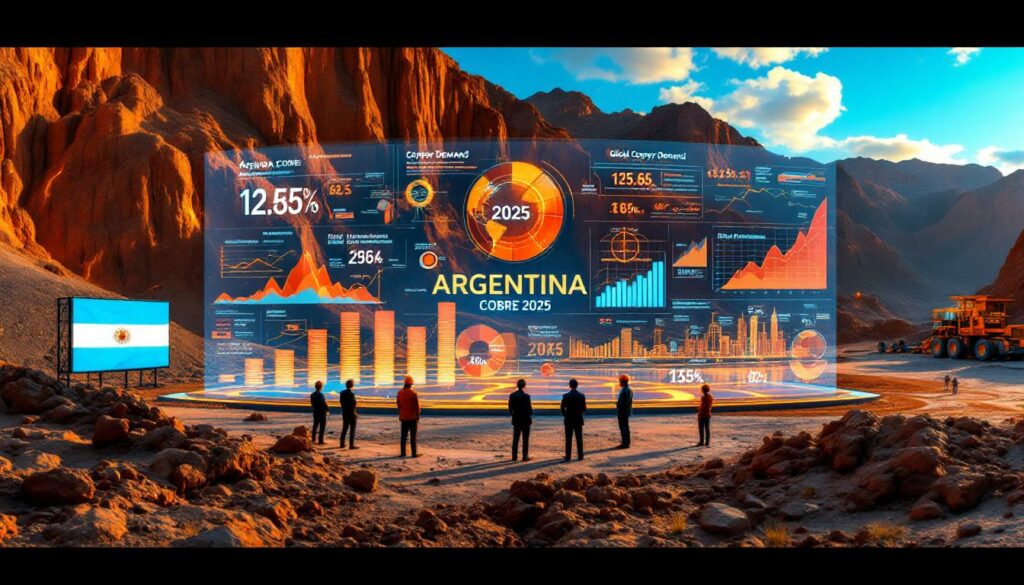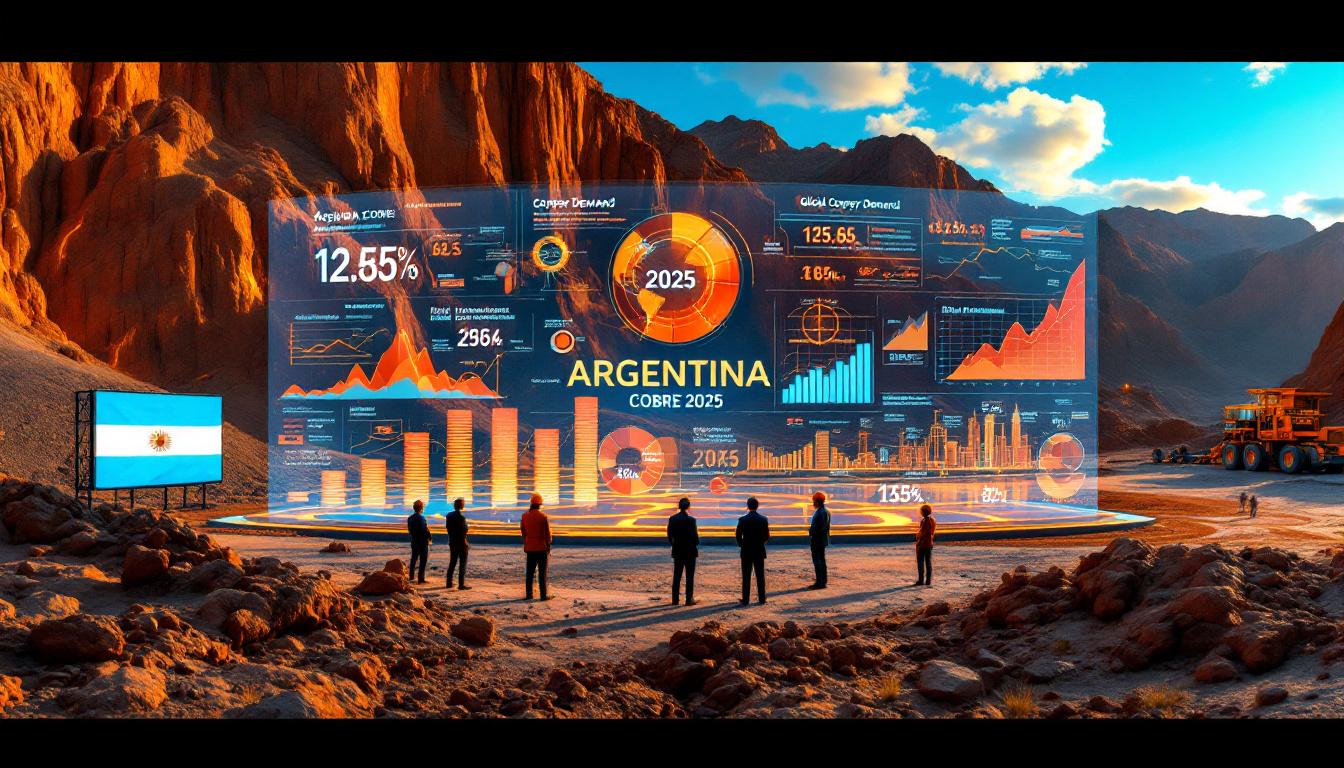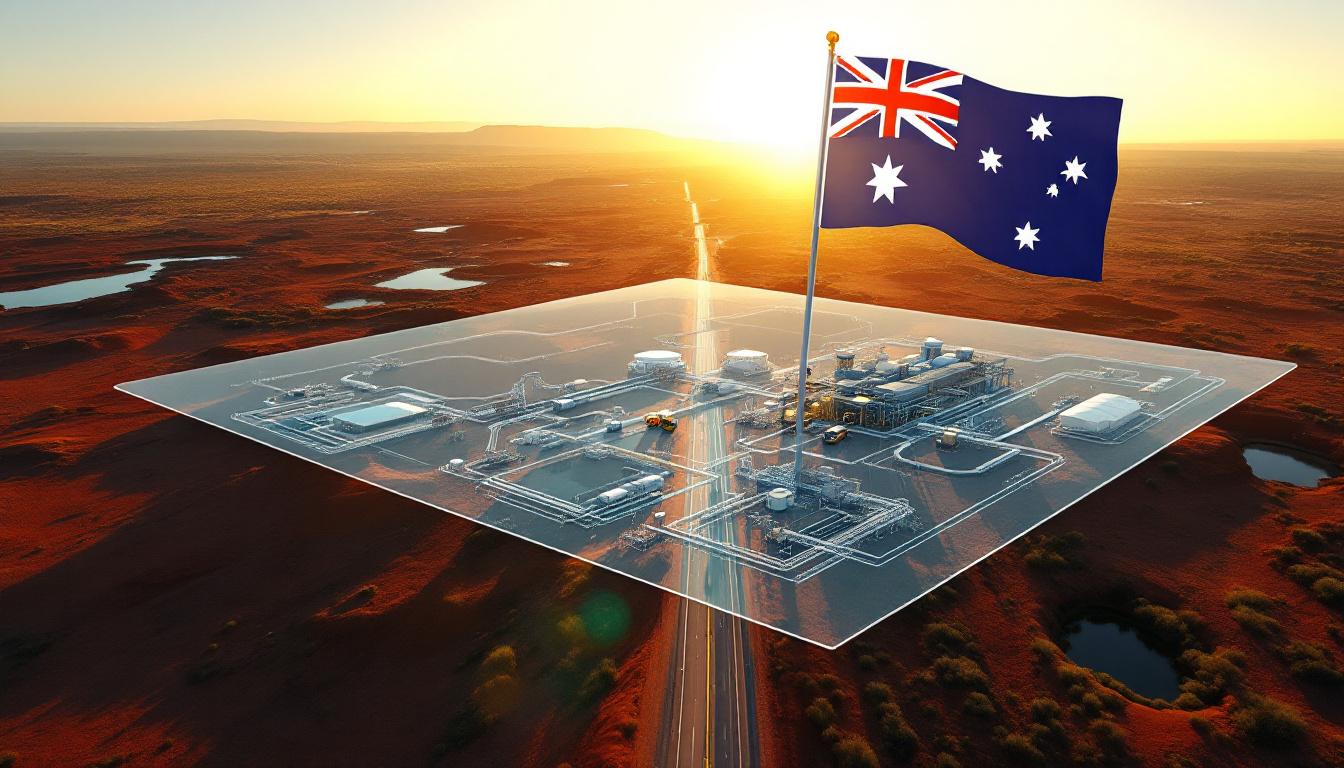Argentina Cobre 2025: Transforming San Juan Into a Copper Mining Powerhouse
Argentina Cobre 2025 is positioning itself as a watershed moment for the nation's mining industry, with San Juan province taking center stage in the country's copper ambitions. This landmark conference, scheduled for August 4-5, 2025, represents far more than a conventional industry gathering—it marks the transition from assessment to strategic action in Argentina's mining sector.
The Strategic Vision Behind Argentina Cobre 2025
The conference emerges at a critical juncture in global minerals markets, with rising copper demand worldwide due to the acceleration of energy transition initiatives. As renewable energy technologies, electric vehicles, and modern infrastructure development drive unprecedented demand for this essential metal, Argentina stands poised to capitalize on its vast, largely untapped copper resources.
According to organizers' estimates, between 600-900 participants will gather at Grazia Eventos, strategically located on National Route 40 in San Juan. This impressive turnout reflects the growing recognition of Argentina's potential to become a significant player in global copper markets.
Celeste González, General Director of Panorama Minero, articulates the conference's ambitious vision: "Copper is much more than an input: it's a factor for economic and territorial transformation. This event seeks to lay the groundwork for Argentina to seize its window of opportunity with a clear, modern, and federal vision—we aim to consolidate San Juan as the copper capital."
The conference represents a collaborative effort between Panorama Minero and both provincial and national governments, demonstrating the alignment of public and private sector interests in developing Argentina's copper industry.
Key Stakeholders Shaping Argentina's Copper Future
The event has attracted an impressive roster of government officials, industry leaders, and technical experts, underscoring its significance in shaping national mining policy.
Government and Diplomatic Representation
High-level government participation includes Luis Lucero, National Mining Secretary, and José Rolandi, Deputy Chief of Cabinet, signaling strong federal support for copper development initiatives. Provincial leadership is equally prominent, with governors from five key mining provinces—San Juan, Catamarca, Jujuy, Salta, and Mendoza—confirmed to attend.
The international dimension is highlighted by the participation of Amador Sánchez Rico, European Union Ambassador to Argentina, reflecting growing global interest in Argentina's mineral resources amid shifting supply chain dynamics and the push for critical minerals diversification.
Industry and Financial Leadership
The private sector presence is equally impressive, featuring Roberto Cacciola, President of the Argentine Chamber of Mining Companies (CAEM), alongside Diego Sucalesca, Head of the Argentine Investment Agency, who will address investment attraction strategies critical to developing Argentina's copper potential.
International mining companies including McEwen Copper, Glencore, KGHM, and others will contribute industry perspectives, while financial institutions like Citi will provide insights on project financing mechanisms essential for capital-intensive copper developments.
Technical expertise will be represented by Benchmark Mineral Intelligence, offering critical market analysis of global copper trends and Argentina's competitive positioning.
Conference Agenda: From Policy to Implementation
The two-day program reflects a comprehensive approach to copper development, addressing policy frameworks, investment strategies, sustainability considerations, and technical innovations.
Day One: Building the Foundation for Investment
The opening day focuses on establishing the regulatory and investment foundation necessary for copper industry growth:
- Women in Mining Argentina Session (8:30-11:00 AM): Features testimonials from female leaders and training proposals to enhance gender diversity
- NI 43-101 Training (11:00 AM-12:00 PM): TMX Group provides essential guidance on listing mining projects on the Toronto Stock Exchange, a critical pathway for project financing
- Institutional Panel "The Moment for Mining" (1:20-2:45 PM): Brings together key government officials and industry leaders to address policy alignment
- Argentine Mining Exporters Group Presentation (3:45-4:00 PM): Led by Ambassador Alfredo Bascou, highlighting export development strategies
- "Sunset Reception" Networking Event (7:30 PM): Facilitates relationship-building among stakeholders at Los Morrillos Hall
The day's sessions will explore the implementation of Argentina's Investment and Production Growth Incentive Regime (RIGI), a cornerstone policy for attracting large-scale mining investments through fiscal stability measures and incentives.
Day Two: Sustainability and Market Integration
The second day shifts focus to sustainability considerations and market integration strategies:
- Global Compact – Forward Faster (9:00-9:20 AM): Flavio Fuertes presents on integrating sustainability principles into mining operations
- Water in Mining Panel (9:20-11:10 AM): Features experts from BID, AFD, and H2O Innovation addressing water technology challenges—a critical factor for desert mining regions
- Market Analysis Session (11:10-11:35 AM): Carlos Piñeiro from Benchmark Mineral Intelligence provides data-driven insights on global copper supply forecast
- Binational Argentina-Chile Mining Panel (2:00-2:30 PM): Explores progress in the Mining Integration Treaty with Chile, the world's largest copper producer
- Critical Minerals and Global Diplomacy Panel (5:45-7:00 PM): Examines Argentina's positioning in the evolving critical minerals landscape
- Mining Communication Session (7:00-7:30 PM): Addresses strategies for improving public communication around mining development
These sessions recognize that successful copper development requires not only favorable geology and investment but also sustainable practices, community support, and regional integration.
San Juan's Strategic Position in Argentina's Copper Ambitions
San Juan province stands at the epicenter of Argentina's copper strategy, with Argentina Cobre 2025 reinforcing its positioning as "the copper capital" of the nation. This designation reflects both geological potential and the province's established mining infrastructure.
Geological Advantages and Development Potential
San Juan hosts several significant copper prospects that represent the foundation of Argentina's ambitions in the sector. The province's geological formations, part of the prolific Andean copper belt that has made neighboring Chile the world's leading producer, offer substantial development potential.
The selection of San Juan as the conference venue is therefore strategic, allowing participants to witness firsthand the province's existing mining operations while envisioning the future development of its copper resources.
Institutional Support for Mining Development
For the conference organizers, this event represents "more than a conference—it marks an institutional milestone opening a new chapter in national mining: the transition from assessment to strategic decision-making." This characterization underscores the shift from exploration and evaluation to concrete development planning.
The provincial government's active participation in hosting and supporting the conference demonstrates its commitment to positioning San Juan at the forefront of Argentina's copper industry development.
Economic Transformation Through Copper Development
Argentina's copper resources represent a significant opportunity for economic diversification and growth, particularly in regions like San Juan where mining can become a cornerstone industry.
Export Development and Value Chain Integration
The formation of GEMA (Argentine Mining Exporters Group), which will be formally presented during the conference, highlights the industry's focus on developing export capabilities. This initiative recognizes that successful copper development must ultimately create export revenues to contribute to Argentina's economic growth and foreign exchange earnings.
Beyond direct exports of copper concentrates, the conference will explore opportunities for value chain integration, including potential downstream processing to capture additional economic benefits within Argentina.
Infrastructure Development as Enabler
The conference agenda recognizes that infrastructure development—particularly water management systems, transportation networks, and energy supply—represents a critical enabler for copper projects. Day Two's focus on water technologies acknowledges the particular challenges of developing copper resources in arid regions like San Juan.
Successful infrastructure development not only supports mining operations but also creates broader economic benefits for regional communities, enhancing the industry's contribution to economic development.
Sustainability and Community Integration
The Argentina Cobre 2025 agenda reflects the mining industry's recognition that sustainable practices and community integration are essential for successful project development.
Water Management as a Critical Challenge
The dedicated panel on water management technologies featuring experts from international development institutions (BID, AFD) and specialized companies (H2O Innovation) highlights the industry's focus on addressing one of the most significant sustainability challenges for mining in arid regions.
Innovations in water use efficiency, recycling technologies, and desalination represent critical enablers for responsible copper development in water-stressed environments like San Juan province.
Climate Considerations and Energy Transition
The participation of economist Graciela Chichilnisky in discussions on climate change considerations underscores the dual role of copper in the energy transition: while copper mining itself requires substantial energy inputs and has environmental impacts, the metal is essential for renewable energy technologies and electrification that will reduce global carbon emissions.
This dynamic positions Argentina's copper development as both a challenge and an opportunity in addressing climate change, requiring thoughtful approaches to minimize the environmental footprint of production while contributing to global decarbonization efforts.
Binational Cooperation: Learning from Chile's Experience
The conference's inclusion of a dedicated panel on Argentina-Chile binational cooperation recognizes the value of learning from Chile's extensive experience as the world's leading copper producer.
Advances in the Mining Integration Treaty
The discussion on advances in the Mining Integration Treaty between Argentina and Chile explores opportunities for collaboration in developing mineral resources along the shared Andean border. This cooperation framework could potentially accelerate Argentina's copper industry development through knowledge transfer, shared infrastructure, and integrated regulatory approaches.
Chile's successful development of world-class copper operations provides valuable lessons for Argentina in areas ranging from technical innovations to sustainability practices and community engagement strategies.
Cross-Border Supply Chain Integration
Beyond resource development, binational cooperation offers potential for supply chain integration, allowing Argentina to leverage Chile's established mining services ecosystem while developing its own capabilities. This collaborative approach could accelerate Argentina's copper industry development while creating mutual benefits for both nations.
Frequently Asked Questions About Argentina's Copper Future
Why is copper strategically important for Argentina's economic development?
Copper represents a strategic opportunity for Argentina's economic diversification and export development. The metal's essential role in renewable energy systems, electric vehicles, and modern infrastructure positions it for sustained demand growth in coming decades, offering Argentina a chance to develop a new export industry based on its substantial geological resources.
How does the RIGI impact copper development prospects?
The Investment and Production Growth Incentive Regime (RIGI) aims to provide the fiscal stability and incentives necessary to attract large-scale investment in mining projects. For copper development specifically, the RIGI addresses investors' concerns about Argentina's historical economic volatility by offering greater predictability for multi-decade investments typically required for copper projects.
What advantages does cooperation with Chile offer for Argentina's copper industry?
Argentina can benefit tremendously from Chile's century of experience in copper mining through knowledge transfer, shared infrastructure development, and potential supply chain integration. The Mining Integration Treaty creates frameworks for this collaboration, potentially accelerating Argentina's industry development while creating mutual benefits for both nations.
Disclaimer: This article contains forward-looking statements regarding Argentina's copper development potential. Actual outcomes depend on numerous factors including market conditions, regulatory developments, and successful project execution. Investment decisions should be made based on comprehensive due diligence beyond the information presented here.
The Path Forward for Argentina Cobre 2025
As industry stakeholders gather in San Juan for Argentina Cobre 2025, the conference represents both a culmination of years of mineral exploration insights and planning and the beginning of a new chapter in the nation's mining development. The event's focus on concrete strategies for investment attraction, sustainability implementation, and market integration reflects the industry's transition from concept to execution.
The success of Argentina's copper ambitions will ultimately depend on the effective implementation of the frameworks and strategies discussed during this landmark conference, transforming geological potential into economic reality while addressing sustainability imperatives and community needs.
For San Juan province specifically, the conference reinforces its positioning at the center of Argentina's copper future, with the potential to become a globally significant copper producing region in the decades ahead if the vision articulated at Argentina Cobre 2025 can be successfully realized. Recent copper price insights suggest the timing could be ideal for Argentina's ambitious copper development plans.
Ready to Catch the Next Major Mineral Discovery?
Discover significant ASX mineral announcements the moment they're released with Discovery Alert's proprietary Discovery IQ model, which transforms complex data into actionable investment insights. Explore how historic discoveries have generated substantial returns by visiting Discovery Alert's dedicated discoveries page and begin your 30-day free trial today to position yourself ahead of the market.




